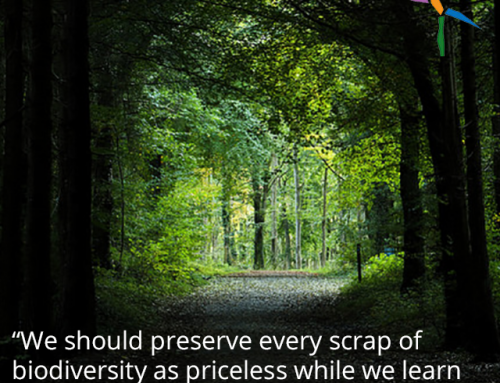At Postconsumers, sometimes we think that the best way to become more eco-friendly and to consume less of the planet’s valuable resources is to look at the most extreme end of the scale and then work your way back to what is achievable and manageable and fun to you. One eco-activity that’s often advocated these days is the idea of creating a “tree-free home.” What’s a tree-free home? How do you create a tree-free home? More importantly, what’s a realistic way that you can create a “less-tree home” so that you’re helping the planet while not setting an unachievable goal? Let’s take a look.
The Extreme: Going All Tree-Free
First of all, we don’t want to make it sound like we think that you’re an extremist if you’re able to create an entirely tree-free home. If you can do that, you’re an eco-superstar! However, the reality is that for most people, going entirely tree-free probably isn’t feasible and does feel like an extreme. We’re here to help you find your way to satisfaction with the amount of tree in your home no matter where you are on that scale. So let’s begin just by defining what a tree-free home is.
So what’s a tree-free home? It’s quite simply a home that has no first-time use products made from trees in it. How do you get there? Here’s a list!
Napkins: Use reusable cloth ones instead of paper napkins
Home Printers: Print on paper that’s already been printed on, recycled or postconsumer paper or paper made from hemp or alternative sources.
Notepads: Flip any paper that you’ve already used over and create notepads for your home. Alternatively, use white boards or chalk boards for home notes.
Lose the Greeting Cards: We love eco-friendly alternatives to sending greeting cards.
Paper Towels: Use reusable cloth towels or cut up old clothing or material scraps. We like to keep ours in a bin under the sink and just launder them when the bin goes empty!
Go Digital: While, for many of us, it’s hard to tear ourselves away from paper versions of products (nostalgia is a powerful feeling), there are many ways that you can go digital now. Digital versions of books, magazines, newspapers and even organizational documents can reduce your carbon footprint.
Reuse: Reuse every paper product in your house as many times as you can! That includes envelopes, magazines, wrapping paper and bags. If there’s not a practical use, think about the art that you can make!
Buy Reused: Of course, you need to buy reused as well. These days, there are plenty of options for postconsumer paper products.
Toilet Paper: We can’t forget it! Buy bleach-free toilet paper that’s made from the highest postconsumer waste content that you can find. We’d suggest looking for a minimum of 80%.
Furniture: Buy it used or crafted from reclaimed materials.
Home Construction: Every house needs some construction love at some point. Try to do home construction that uses reclaimed materials, eco-friendly flooring or other alternative materials.
How Tree-Free Should Your Home Be?
The list above may look like one of two things – daunting or inspiring! If you’ve got it in you to go entirely tree-free, then we’d actually suggest that you start small. Pick one or two items off of this list that you can accomplish and then build your way up to being an entirely tree-free home. If this list seems extreme to you, then there are still things that you can do that help the planet by reducing first-use items from trees. We think that great places to start are by replacing napkins and paper towels with reusable alternatives as well as replacing notepads with whiteboards and digital alternatives. Pick the item (or two) that appeals to you and then implement that in your life. You may find, later, that you can take on more tree-reduction. If you don’t, then you’ve already made an impact just by reducing a small amount.
Do you have other tips on how you can help to create a tree-free home? Comment below or tell us about them on Facebook, Twitter, Pinterest or Instagram.





